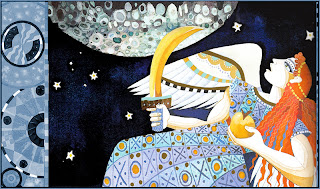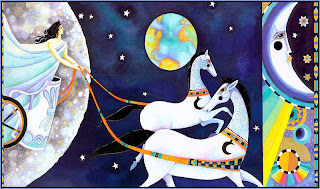The mythology of Eris / Mitología de Eris

Picture by/Imagen de Christina Balit Eris was the goddess or of strife, discord, contention and rivalry. She was often represented specifically as the demon of the strife of war, who haunted the battlefield and delighted in human bloodshed. She was the sister of Ares and usually attended wars with him. Eris' Roman counterpart was Discordia. Because of Eris' disagreeable and trouble-maker nature she was the only goddess not to be invited to the wedding of Peleus and Thetis. Despite of that, she turned up anyway, and when she was refused admittance, she, in a rage, threw a golden apple amongst the goddesses inscribed "To the fairest." Three goddesses laid claim it, and in their rivalry brought about the events which led to the Trojan War. _____________________ Eris era la diosa de la lucha, la discordia, la contención y la rivalidad. Se la representada a menudo específicamente como un demonio de la lucha y de la guerra, que hechizaba a los guerreros en el c...


